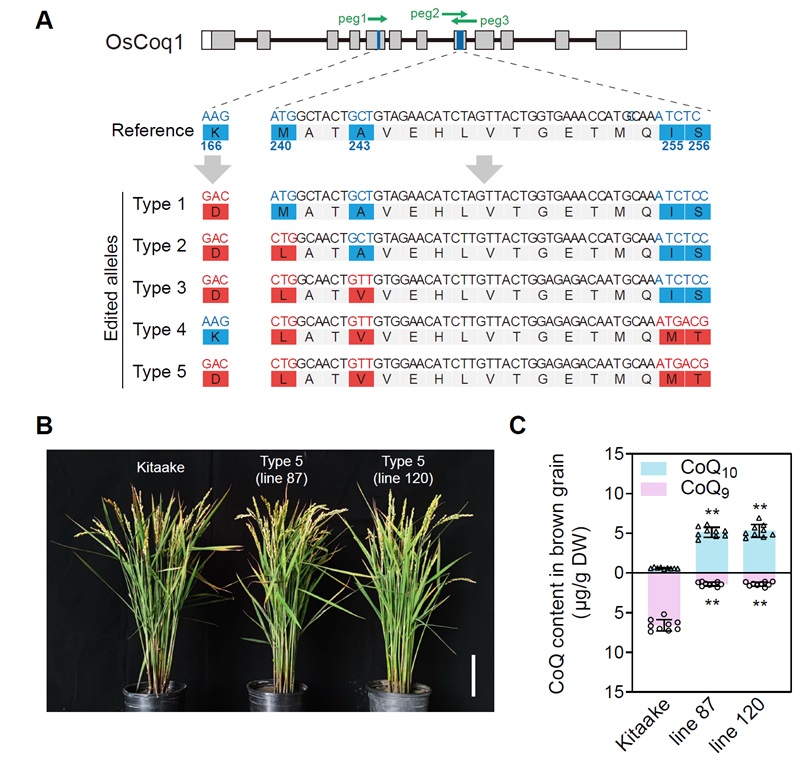A team of Chinese scientists has used targeted gene editing to develop rice that produces coenzyme CoQ10 (CoQ10), a vital compound for human health.
Led by Prof. CHEN Xiaoya from the CAS Center for Excellence in Molecular Plant Sciences/Shanghai Chenshan Research Center and Prof. GAO Caixia from the Institute of Genetics and Developmental Biology of the Chinese Academy of Sciences (CAS), the researchers used targeted gene editing to modify just five amino acids of the Coq1 rice enzyme, creating new rice varieties capable of synthesizing CoQ10.
CoQ10 is important for human health, especially heart protection. It is an essential component of the mitochondrial electron transport chain and serves as a fat-soluble antioxidant. Different species synthesize CoQ with different side-chain lengths. Humans synthesize CoQ10 with a side chain of 10 isoprene units (C50), while cereal food crops like rice and wheat, and certain vegetables and fruits, primarily synthesize CoQ9, which contains nine isoprene units (C45). The invention of CoQ10-producing crops to substantially increase the CoQ10 content in plant-based foods offers a cost-effective and environmentally friendly approach to nutritional fortification, offering great potential benefit.
The molecular mechanism underlying the variation in CoQ side-chain length was previously unclear. Thanks to the diverse plant collections at the Shanghai Chenshan Botanical Garden of the CAS Center for Excellence in Molecular Plant Sciences, the research team obtained 134 plant samples from 67 families, including mosses, clubmosses, ferns, gymnosperms, and angiosperms. The researchers determined the distribution patterns of CoQ types in these species and revealed that CoQ10 is an ancestral trait of flowering plants, with most plants still synthesizing CoQ10. However, grasses, daisies, and cucurbit plants mainly produce CoQ9.
After analyzing the evolutionary trajectories and natural variations of Coq1 enzymes across more than 1,000 terrestrial plant species, as well as by using machine learning, the researchers ultimately identified five amino acid sites that determine chain length.
After the targeted editing, the rice plants in this study primarily synthesize CoQ10, with up to 5 μg/g produced per rice grain. This shows that gene editing has become an efficient and safe technology for crop breeding.
The successful development of CoQ10 rice will significantly expand the food sources of CoQ10. It also provides an example of using big data and AI for crop breeding.
This study was published in
Cell and was funded by the National Natural Science Foundation of China, CAS, and the Shanghai Science and Technology Committee, among others.
Generating CoQ10 rice lines by genome editing (Image by XU Jingjing, et al)





